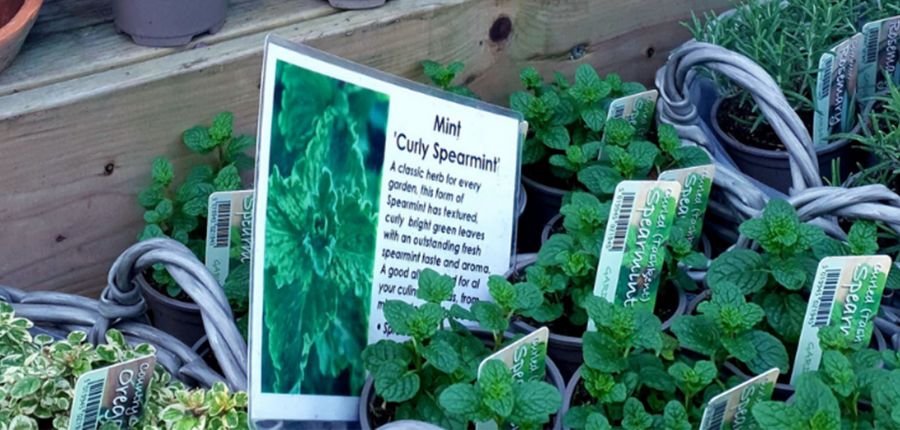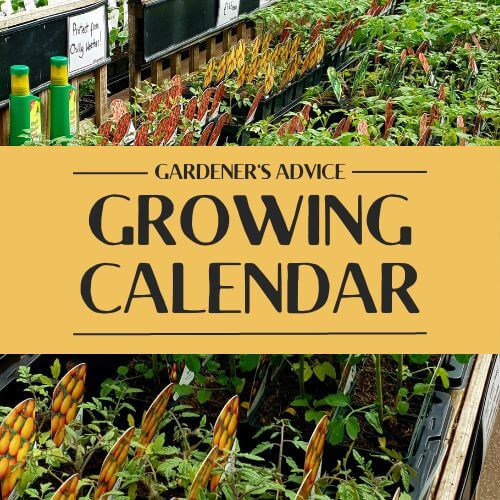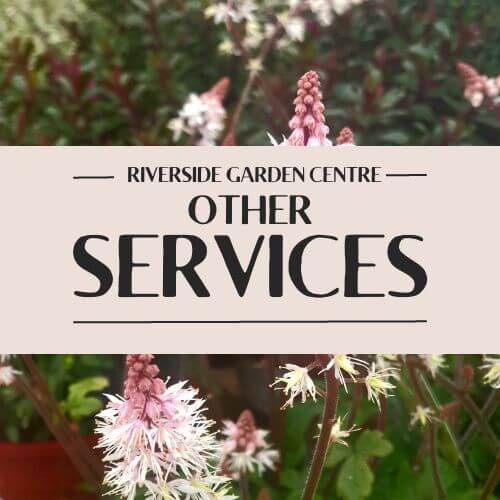Growing Guides
Posted By: Category: Seasonal AdviceWe have put together some guides to growing edibles and half-hardy/hardy/tender annuals to get you started.
If you are unable to see the images (poster jpegs), please scroll down to read the text.
JANUARY & FEBRUARY
.png)
.png)
MARCH & APRIL
.png)
.png)
(text)
GROWING HALF-HARDY, HARDY AND TENDER ANNUALS FROM SEED
Growing flowers from seed is colourful, quick growing and very straight forward if you have the right equipment and knowhow!
Nearly all annuals require full sun and do not like the soil to be too rich as this will cause lots for leafy growth at the expense of flowers.
JANUARY & FEBRUARY
Hardy annuals can survive frost and can be sown outdoors in Autumn while the soil is still warm and indoors from January onwards. Here are some examples of our favourites to grow and what to plant them in:
Half-hardy annuals tolerate cool temperatures but need protection from frost. Sow indoors and protect the plant till after the last frosts.
Examples of these are:
Where we have stated sowing in modules - sow small amounts of seed in each to create plugs plants
LATE MARCH & APRIL
Tender annuals need it to be warmer to grow succesully, both in the air and soil, with no sign of frost. In the meantime you can sowing them to start growing indoors.
Examples of these are:
Growing from Bulbs & Corms
Bulb and corms need to be potted up in large pots, somwehere undercover, light and frost free.
Extra Tip:
Although dahlias will grow just fine on their own, pinching the stalk when they have 4 sets of leaves, will give you a stronger, bushier plant with more flowers.
GROWING EDIBLES
It can be daunting growing your own, however get ready to propagate with our simple guide on what to sow over the next few months.
At the start of the year, you will be starting off indoors, on a light warm windowsill (unless you have a heated greenhouse!)
We have got you covered when it comes to all the equipment you will need, including trays, modules, root trainers and biodegradable pots. We also stock heated propagators that dramatically increase the germination rate (and cut the waiting time too!)
Seeds come in a variety of sizes, which determines how they are sown. Large seeds are generally sown in individual pots, some are sown in modules as they do not like root disturbance, whereas tiny seeds are better scattered in a tray close to the surface. Some seeds have a very long root system, so they are sown in long pots or “trainers”.
JANUARY
FEBRUARY
MARCH & APRIL
It is important to keep an eye on weather during this time. Depending on what you are growing you will need to sow your seeds inside or in a protected environment.
Getting Potatoes Ready - Chitting
Once you have bought your seed potatoes, they need to be ‘chitted’ – a wonderful gardening term for encouraging shoots to develop in order to give the potato a head start once it is planted.
Pricking Out and Potting On
‘Pricking out’ means separating out seedlings growing together and transferring them into their own plugs or pots. Plant seedlings into enriched compost.







